|
Tule
Ponds at Tyson
BIRDS
DUCKS |
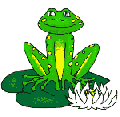 |
|
Ducks that have been
observed at Tyson Lagoon include year round residents that breed in the
Fremont area, long distance migrants that pass through in spring and
fall on their way to and from far northern summer breeding grounds, and
winter residents that spend the winter resting and feeding at the Lagoon
but breed north of California. |
Dabbling Ducks (Anatinae)
These surface-feeding (“puddle ducks”)
have a more slender body, longer neck, and longer legs held more under
the body than those of diving ducks. They swim fairly high with the
tail held off the water. They feed in shallow waters by dabbling and
up-ending to reach bottom vegetation with their bill. When leaving the
water they usually take off without a run on the surface. When foraging
on land, they walk with a slight waddle, and may run. Males often have
strongly contrasting patterns in breeding season; females do not. Most
species have an iridescent patch (speculum) on the trailing edge of the
wing. Gadwalls, green-winged teal, northern shovelers and mallards are
dabbling ducks that have been observed at Tyson Lagoon.
 Mallard Mallard
Anas
platyrhynchos
The mallard is
our most common duck. Mallards have a violet or blue wing patch
(speculum) bordered with white. The bill is light greenish-yellow in
the male and yellow blotched with black in the female. The hen
(female) is mottled brown with a light line above the eye. In
breeding plumage the drake (male) has a bright green head, white
color, reddish-brown chest, gray sides, and black all around the
base of the tail. |
Diving
Ducks (Aythyinae)
Diving ducks have heavier bodies than
dabbling ducks. Their feather colors are black, white, gray, and
brown/rust. Males and females have different plumage. They swim medium
to low in the water and commonly dive to the bottom for food, although
they may tip-up in shallow water. Take-off from water requires a rapid
patter along the surface. They walk with a pronounced waddle and do not
feed on land or get far away from water. Ring-necked ducks, scaup, and
buffleheads are diving ducks that have been observed at Tyson Lagoon.
|
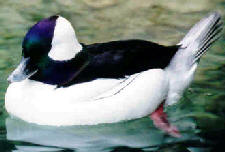 Bufflehead Bufflehead
Bucephala
albeola
The bufflehead
is one of the smallest ducks. The male has white sides and chest
and a large white patch around the back of the head. The female is
dark gray above with a small white mark below and behind the eye. |
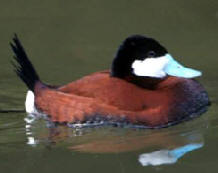 Ruddy Duck Ruddy Duck
Oxyura
jamaicensis
Ruddy ducks are
small and chunky. They have a large head, broad bill, dark
feathering with white throat and cheek, and a long erect, rounded
tail. The male has reddish-brown plumage and a bright blue bill in
breeding season. Ruddies are good divers. They require a long run
and fly furiously over the surface of the water before becoming
airborne. |
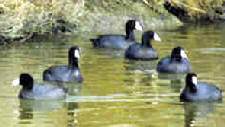 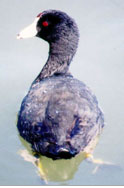 American Coot American Coot
Fulica americana
Coots (mudhens)
behave like ducks and are often confused with them. However, the
American coot is not a duck; it is related to moorhens and rails.
Adult coots are dark slate gray with a white bill and “shield” on
the forehead. Their beaks taper abruptly to a blunt point. They
have a chunky body, greenish-yellow legs, and large toes that are
lobed, rather than webbed. They swim high in the water, often
jerking their heads forward and back. They both tip-up and dive
deeply for food. Take-off from water is by a long or short run. |
|

 Mallard
Mallard  Bufflehead
Bufflehead
 Ruddy Duck
Ruddy Duck 
 American Coot
American Coot